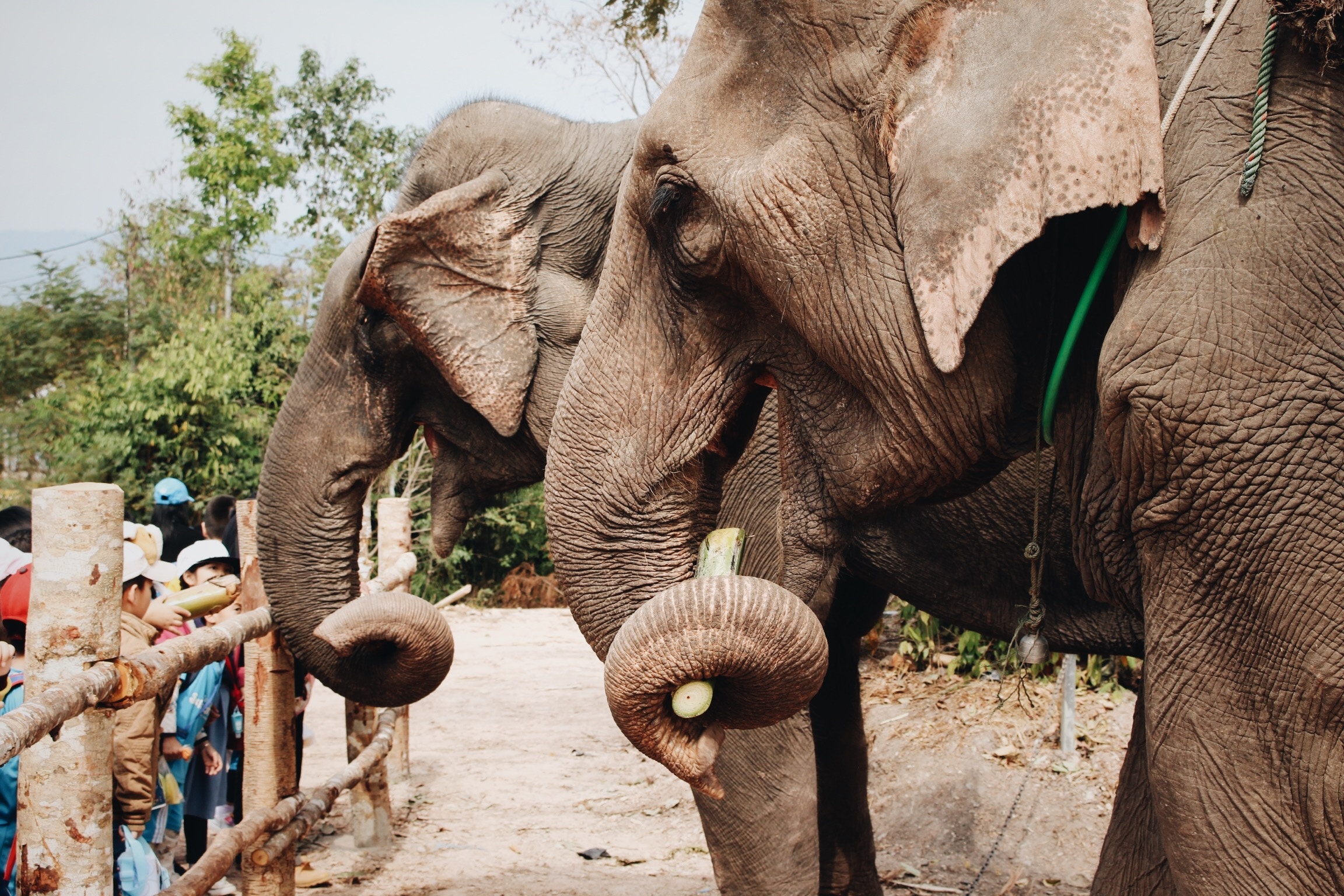
Asian Elephants
These gentle giants are smaller than their African counterparts, with smaller ears and only one finger on their trunk instead of two. Raised in matriarchal herds, elephants are highly social and extremely intelligent.
At the beginning of the 20th century, the population of Asian Elephants stood at approximately 100,000. Today that number is halved and the population continues to decline at a rapid pace, making these creatures officially endangered.
The natural habitat of the Asian Elephant has been reduced by a drastic 85%, and yet they are still commonly found throughout South East Asia as working animals: in forestry, circus performances, and tourism.
Elephants in forestry
Although the logging industry has been significantly reduced as the teak forests of South East Asia have been depleted, elephants are still used to transport logs in the forests of Burma. It takes up to 20 years to train an elephant for logging. They are taught to obey commands, navigate rough forest terrain and drag or push logs with their trunks, tusks or by chains. Once trained, these elephants are worth around $9,000 each. Elephant owners rent their animals to logging companies for $8 a day.
Much of the logging going on today is illegal, and with illegal industry comes undocumented and extremely poor working conditions for both humans and elephants.
Elephants in tourism
Many tourists headed to South East Asia look forward to seeing elephants. Elephant riding, trekking, circuses and painting shows may sound like fun, but a 2017 study by World Animal Protection found that “77% of elephants used in tourist venues in Asia are living in severely inadequate conditions”
When they aren’t giving rides or performing, the majority of tourism elephants are chained at the ankles and unable to move more than 3 metres in any direction.
Tourist venues often keep elephants in filthy enclosures with concrete floors, which are terrible for elephants’ sensitive feet. Around 50% of elephant deaths in captivity are caused by foot infections.
Elephant spines are not meant to bear the weight of humans. After repetitive stress, elephants can develop permanent spinal injuries. The rubbing of the straps and seats used for riding can also cause skin abrasions and infections.
Besides the physically damaging conditions, elephant tourist venues are often close to loud music, busy roads and crowds of people. All of these factors are stressful to the animals.
The training process
Working elephants are commonly taken from their mothers as babies, as young as three years old. If taken earlier than 2 years, an elephant will not survive without its mother’s milk. Even within a natural herd, an elephant orphaned before the age of two will not survive.
In the wild, elephants stay with their mothers for around 16 years. After that, females typically remain within the matriarchal herd for the rest of their lives. Males start to display independence at age five and by 16 they go solo or find a group of other males to hang out with. Working elephants are often kept in an unfamiliar state of isolation.
The methods used to tame elephants are torturous with the aim of breaking the animal’s spirit. Baby elephants are active for up to 18 hours in the wild, but in training, they are kept in small cages or chained up, with no room to move. There they are whipped, stabbed and beaten repeatedly until they learn to fear humans.
“Training” is complete when the elephant becomes completely submissive to humans. At this stage the elephant will usually display signs of post-traumatic stress disorder such as swaying and head bobbing.

Is there any good way to visit elephants in SE Asia?
The World Animal Protection Study of elephants in the Asian tourism industry found only 7% of the observed elephants were kept in acceptable conditions. These rare venues keep their animals in a natural or semi-natural environment and only allow visitors to observe elephants from a distance. This allows elephants to let their guards down and behave as they would in the wild, undisturbed by humans, well fed, and surrounded by other elephants.
Don’t believe everything you hear
If you are still considering visiting elephants on a trip to South East Asia, be very careful and thorough in your research. There are many establishments claiming to be elephant sanctuaries that are not. Many such establishments still keep elephants in confined concrete areas and will make the elephants perform tricks for an audience. It’s also dangerous to spend time up close and personal with these giant creatures. Without any desire to hurt humans, accidents happen; especially when walking in close proximity, bathing, or playing.
No matter how well cared for animals seem to be, their needs can only ever be fully met in the wild.
